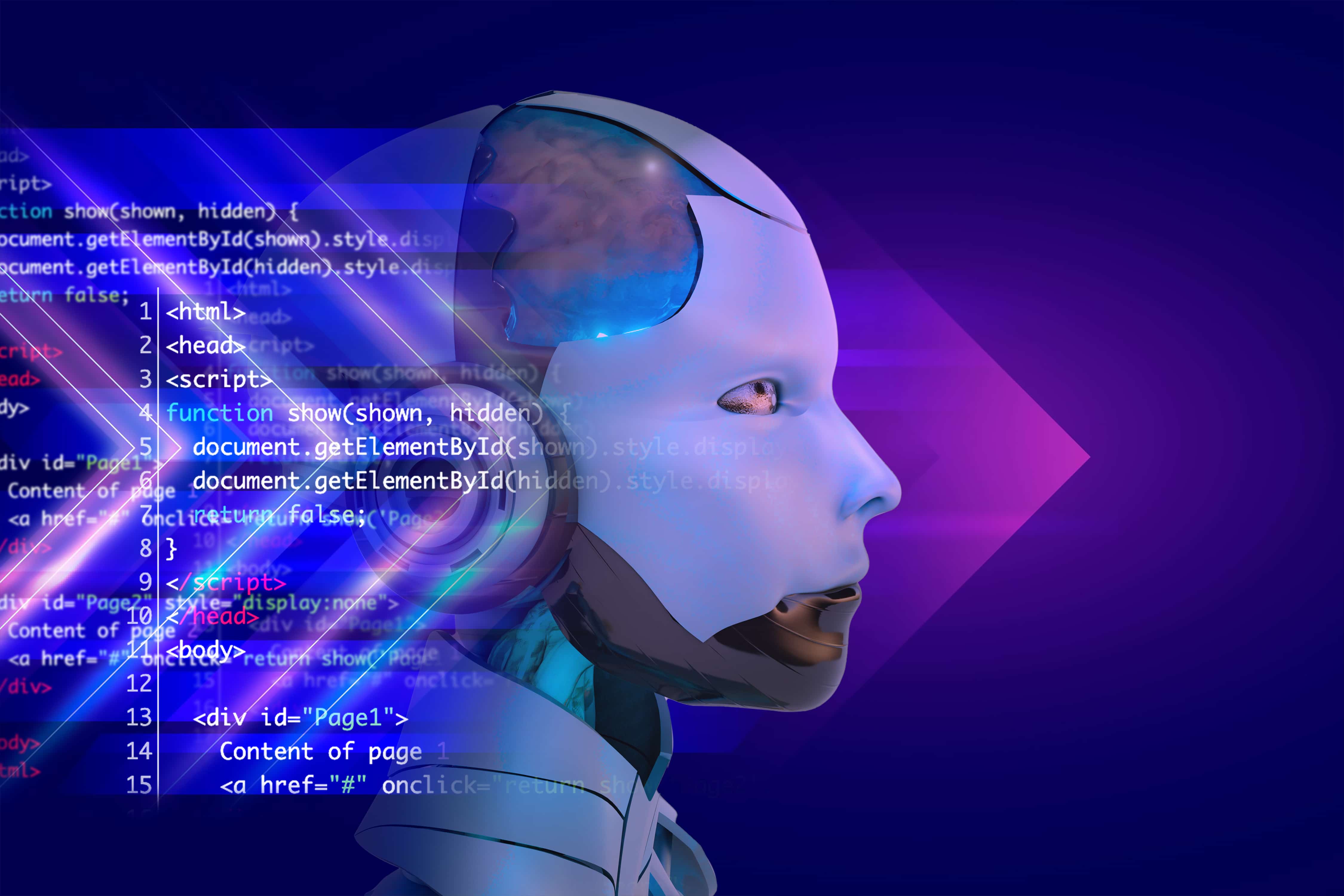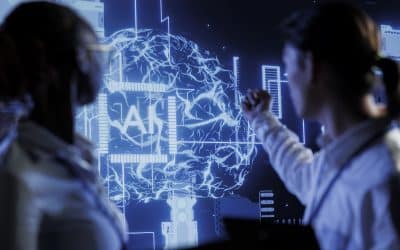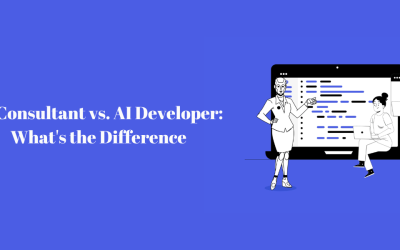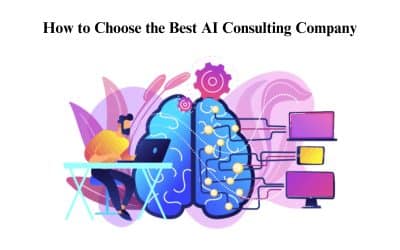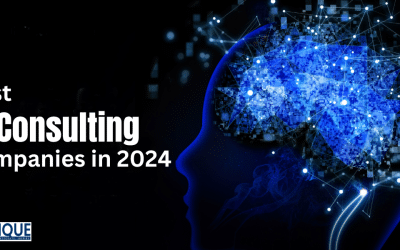What distinguishes each technology within computer science from one another? Technology continues to become ever more integrated into our lives every day. Businesses increasingly rely on machine learning algorithms to stay ahead of consumers’ expectations, simplifying processes. Current technology trends have made artificial intelligence, machine learning, deep learning, and GenAI (Generative AI) ubiquitous concepts. Buzzwords are often used interchangeably, confusing their definitions and usage. Although the words are connected, they refer to different things. Making complex connections between the terms is challenging, but don’t worry; Artificial Intelligence Consulting Services will make this easy.
This blog will delve into these new technologies, deciphering their differences and exploring their practical applications in the digital world, equipping you with valuable knowledge.
What Exactly Is Artificial Intelligence (AI)?
Artificial Intelligence, the broadest category, is one of three terms commonly used to refer to machines that mimic human brains and cognition. AI’s ability to handle complex tasks traditionally performed by humans, such as speech and facial recognition, translation, and decision-making, is a testament to its potential.
Typical Applications Of AI Include
Virtual Assistants
AI-powered virtual assistants, such as Siri, Google Assistant, and Alexa, offer voice-based interactions and support to users.
Healthcare Diagnosis And Imaging
AI aids in diagnosing illnesses, analyzing medical pictures, and forecasting patient results. This leads to more accurate diagnoses and more personalized treatments.
Virtual Reality And Augmented Reality
AI can create immersive virtual and enhanced reality experiences by simulating actual surroundings and interacting.
Game-Playing AI
AI algorithms have analyzed game data and forecasted the outcomes of actions, allowing them to play games like chess, PubG, GTA, and poker on a superhuman level.
Advantages And Limitations Of Artificial Intelligence
Artificial Intelligence refers to computer programs designed to carry out tasks typically carried out by human minds. One of the significant benefits of Consulting AI is its capacity to handle large quantities of information and gain data quickly, helping companies and organizations to make better choices. Furthermore, AI can automate repetitive work and boost effectiveness, which allows humans to concentrate on more creative and complex jobs.
But AI also has some limits. A significant concern is that as AI becomes more sophisticated, it may become challenging to manage, possibly producing unintended results. There are also ethical concerns regarding the usage of AI, including the possibility of biases in the algorithms used to make decisions.
What Is Machine Learning (ML)?
“ML” focuses on machines studying data and learning without explicit programming. Machine learning algorithms employ statistical analysis methods to detect patterns and make assumptions or decisions based on the historical data they have been taught. Though ML is an aspect of AI, the term “ML” was invented to highlight the significance of learning based on data and the capability of machines to increase their capabilities by exposure to relevant data.
Machine Learning emerged to address certain limitations in conventional AI techniques by harnessing the potential of data-driven learning. ML has proven highly effective for speech and image recognition, natural speech processing, recommendation algorithms, and more.
Typical Applications Of ML Include
Time Series Forecasting
ML methods can analyze past time series data to predict future trends or values. Time Series can be helpful in many fields, such as sales forecasting, stock forecasting, market predictions, energy demand forecasting, and weather forecasting.
Credit Scoring
ML models can determine creditworthiness using past data. This allows the lenders to evaluate credit risk and make educated decisions regarding approving loans and rates.
Text Classification
ML models can categorize texts into types or categories. Examples include spam filters, sentiment analysis, topic classification, and content categorization.
Recommender Systems
The ML algorithm is commonly employed in recommender systems, which give users personalized suggestions. These systems can learn users’ preferences and patterns based on historical data to recommend relevant products like music, films, or other media.
A machine learning model scaled with a large dataset can compromise its accuracy. One major disadvantage of ML is that human beings must determine the relevant elements for the data using business expertise and other statistical analysis. The ML algorithm also needs help undertaking complex tasks involving large-dimensional information or patterns. This led to developing Deep Learning (DL) as an individual branch.
Advantages And Limitations Of Machine Learning (ML)
Machine learning is a type of AI that analyzes algorithms that analyze data to learn from it without having to be explicitly programmed. The primary benefit of ML is its capacity to evolve as it explores more significant amounts of information. This could lead to higher-quality predictions and better insight.
However, it also has its limitations. The main concern is that the precision of forecasts could be affected by biases in the information used to develop the algorithm. Furthermore, algorithms for machine learning are often complex and challenging to understand and interpret. Ultimately, it is hard to know how they’re making their decisions.
What Is Generative AI (GenAI)?
Generative AI is a subset of AI, and one of the subsets of Deep Learning focuses on developing models that can generate fresh content similar to previously existing data. They aim to produce material identical to the content made by humans. Generative Adversarial Networks (GANs) are a famous example of Generative AI models that employ deep neural networks to create real-world content, such as pictures, texts, images, and music.
Typical Applications Of Generative AI Include
Image Generation
Generative AI can be trained from vast collections of images and create fresh, unique images using the data that has been taught. The tool can make photos with an artistic flair by responding to prompts that mimic human brains.
Video Synthesis
Generative models can produce new content by taking lessons from existing videos. They can also perform tasks like video prediction, in which the model can generate the future frame from a sequence of frame inputs. Additionally, they can perform video synthesis by creating an entirely new video. Video synthesis can be used for animation, effects, and special effects, as well as video game development software.
Social Media Content Generation
Generative AI is a powerful tool for automating content generation on social media platforms. This allows the creation of exciting and customized posts, captions, and images. By training generative models using a massive amount of social media information, including text and images, they can create relevant and engaging content tailored to users’ specific preferences and patterns.
Advantages And Limitations Of Gen AI
It is a type of AI that utilizes algorithms to create new material, like music, pictures, or even texts. One of its main benefits is its capacity to generate new content, like human-generated content, that can prove helpful in instances like art or music.
However, it also has limitations, which can be easily handled with the help of an AI Consultant. The main concern is that the output of these algorithms might be of a lower quality than content created by humans. Furthermore, there are ethical questions concerning the usage of AI that generates AI for applications like deep fakes. These may be used to create fake or misleading content.
What Is Deep Learning (DL)?
Because of its distinct abilities and advances, deep learning has a crucial function as an independent segment within the Artificial Intelligence (AI) field. It is a method of machine learning that helps computers learn from data instilled by humans. DL uses deep neural networks with various layers to learn how to represent data hierarchically. It extracts relevant features and reduces the manual process of feature engineering. DL can handle complicated jobs and massive datasets better. Despite increasing difficulties in interpretability and complexity, DL has shown tremendous success in many areas, from computer vision to speech recognition.
Typical Applications Of Deep Learning Include
Autonomous Vehicles
Deep learning is the foundation of autonomous vehicles. Deep neural networks detect and recognize objects, as well as detect and track lanes and pedestrians. These allow cars to detect and react to the environment around them.
Facial Recognition
Facial recognition teaches neural networks to recognize and distinguish human faces, allowing Applications like biometric identification, surveillance systems, and PE personalized user experiences. Deep-learning models examine data from many sources, such as satellite images, other sensors, and soil sensors. They can provide valuable insights into cultivation management, disease detection, irrigation planning, and yield forecasting, which leads to better and more sustainable farming practices.
Deep learning was designed to operate on a vast data set that must be continually analyzed. This process is costly and time-consuming, mainly when done by hand. DL models also need more interpretability, which makes it hard to alter them and understand the system’s structure. In addition, attacks from adversaries can exploit the weaknesses of deep learning models. This can cause the models to give incorrect results or perform unexpectedly, causing questions about their reliability and security when used in real-world scenarios.
Advantages And Limitations of Deep Learning or DL
It is a subset of machine learning that utilizes neural networks to imitate human brain functions. One significant benefit of deep learning is the ability to process unstructured data, such as natural language or images, at a high level of precision. But it also has its limitations. The main issue is that deep-learning algorithms require large quantities of data to be trained, which can take a long time and be expensive. Furthermore, the sheer complex nature of neural networks could make them difficult to comprehend and interpret, which is an issue in situations where explaining is essential.
Relationship Between AI, ML, DL, And Neural Networks?
One of the easiest ways to approach artificial intelligence, machine learning, and neural networks is to consider them a set of AI machines from the biggest to the tiniest. Each one is a part of each. Artificial Intelligence is the most crucial system. The number of layers or the depth of neural networks separates one neural network from a deep-learning algorithm that must contain at least three layers.
What Are The Ways These Technologies Can Interact?
Now, let’s have a look at how all these technologies interact with each other.
AI Is The Broadest Classification
AI technology employs algorithms to complete jobs that generally call for human brains, including thinking, perception, and learning. These machines can spot patterns in data and then make choices based on that information. We can classify AI into two types: weak or weak AI and general or powerful AI.
Weak or narrow AI Systems are created to accomplish specific functions, including voice assistants that provide customer support. However, intense or general AI systems can perform any task of intellectual ability that humans can do and adapt to various circumstances similar to humans. The above AI systems are developing and are not currently widely accessible.
Machine Learning Is A Subset Of AI
Machine Learning (ML) is an artificial intelligence practice focused on creating machines that can learn without being explicitly programmed. Rather than following specific commands given by programmers directly, these machines learn by collecting vast data sets and finding patterns within them to recognize. Supervised learning algorithms are trained to create predictions using labels. In contrast, non-supervised learning algorithms can learn from unlabeled data to discover patterns or groups. Reinforcement learning algorithms learn to make choices in response to rewards and penalties.
Deep Learning Is One Of The Subsets Of Machine Learning
Deep learning is a subset of machine learning that focuses on developing artificial neural networks that can be taught from the data. The neural networks designed for deep learning are created to imitate the design of the human brain. Deep learning networks could include a variety of layers that can detect and analyze intricate patterns that are present in the data.
Deep learning has been instrumental in various AI applications, including speech recognition, image recognition, and natural language processing. For example, deep learning has revolutionized computer vision by allowing computers to detect objects in videos and pictures with excellent quality.
Real-World Applications Of ML, DL, And Generative AI
Artificial Intelligence (AI) has existed for years; however, recent advances in ML, DL, and generative AI have made AI much more accessible and usable. The technologies can be used in various real-life applications across industries like manufacturing, finance, healthcare marketing, and manufacturing. In this piece, we’ll explore some of the most significant uses of machine learning, deep learning, deep learning, and various forms of generative AI and how they have revolutionized multiple industries.
Real-World Applications of Machine Learning
Machine learning is a field of AI that involves educating algorithms to understand the data and making forecasts or decisions that are not explicitly programmed. Machine learning applications can be diverse and encompass the detection of images and natural language processing—the prediction of maintenance and fraud detection, as well as customized marketing.
Researchers use machine learning algorithms to study patient data and create individualized treatment plans. According to an article, online learning can help financial analysts identify fraudulent transactions that are up to 90 percent precise. Percent-wise, precise scoring models using machine learning algorithms are more accurate than traditional scoring models, which will improve lending decisions.
Real-World Applications Of Deep Learning
Deep learning is one form of machine learning that involves training deep neural networks for specific tasks such as speech/image recognition, natural language processing, and recommendation systems. Deep learning has transformed computer vision, allowing machines to recognize and categorize objects with human-like precision.
One of the most significant uses of deep learning can be found in autonomous vehicles. Organizations like Tesla, Waymo, and Uber use deep learning algorithms to design self-driving cars. The algorithms can analyze vast amounts of data taken from cameras and sensors to make real-time decisions about driving, like slowing down, stopping, and switching lanes.
A different application for deep learning is natural language processing (NLP). NLP involves teaching machines how to recognize and respond to human speech. Advanced algorithms in deep learning have led to significant advances in NLP, such as speech translation, sentiment analysis, and chatbots. For instance, Google Translate uses deep learning algorithms to rapidly translate texts between different languages.
Real-World Applications Of Gen AI
It is a kind of AI that creates machines that generate new media, including images, videos, and text, similar to human-generated content. The most extensive application for Generative AI is within the field of creativity, which uses it to create artwork, music, and literature.
A few of the renowned uses of Generative AI are in fashion and design. Businesses employ Generative AI to design innovative designs and trends. The algorithms analyze fashion trends, consumer preferences, and sales history to develop new, trendy, and sellable designs. Another use of generative AI is video game development. Game designers use technology to design games with new assets, including characters, landscapes, and environments. The technology can create top-quality game assets in a fraction of the time humans need to make them manually.
Final Thoughts
In the expanding realm of artificial intelligence, we are confronted with different strategies and methods represented in AI, ML, DL, and Generative AI. AI is an all-encompassing, broad concept, and ML discovers patterns from the data. DL utilizes deep neural networks to achieve sophisticated pattern recognition, and Generative AI generates material. Knowing the subtleties between these two concepts is essential for understanding their capabilities and how they can be applied across different industries.
Although no area of AI can guarantee complete precision, the technologies frequently combine and improve results in their specific applications. It is important to remember that even though every AI application that generates AI apps falls within the category of AI, the opposite does not necessarily apply. Not all AI applications are classified under the umbrella of Generative AI. Similar principles apply to ML and deep learning.
While technology is constantly evolving, the exploration and development of technologies will undoubtedly shape the future of intelligent systems, creating unprecedented breakthroughs within artificial intelligence. There are endless possibilities, and the constant advancement of technology and AI Business Consulting will open the doors to new opportunities in this rapidly evolving area. Each of these terms is interconnected. However, each one refers to a specific aspect of developing AI.

